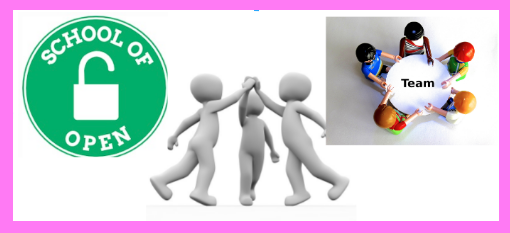
For this article, I will insert – Classroom moves – in the WHAT section so that I don’t lose track of them before the NOW WHAT section.


1 – Shared Vision
- Average version
- Blurry vision of outcomes
- Vision not shared enough with team members
- Star version
- Clear and inspiring vision
- Communicates vision regularly
- Vision is understood by all members
- Vision is reinforced in numerous ways
- Star actions
- Communicate vision at least 4 times per day
- Explain what needs to be done to fulfill vision
- Explain why vision supports the team
- Use the word because to tie vision to individuals
- Include members from all levels to offer comments & clarifications – involvement = commitment
- Related classroom moves
- Design student friendly long term and supporting (character / academic ) learning targets
- Communicate long term targets early in grading period (verbally, graphically, written)
- Communicate supporting learning targets daily
- Explain relevance of learning targets
- Facilitate class discussion about learning targets – encourage students to clarify and revise targets
- Have students self assess their progress using learning targets every day
- Use multiple assessments to track progress toward learning targets daily
2 – Trust among members
- Average version
- Relies only on herself
- Does not expect much from others
- Star version
- Develops interdependency with others
- Encourages high trust
- Encourages high risk taking
- Star moves
- Develop trust by admitting mistakes
- Make / keep small promises
- Set high team expectations
- Encourage risk taking
- Encourage direct feedback
- Related classroom moves
- Make / keep promises about grades and follow-up workshops
- Admit when activities are not working, how you know and involve students in fixing it
- Set high classroom expectations
- Allow students to conduct small tests of small risks in safe circumstances (gradually ramp up the scope of these learning risks and experiments)
- Ask students for feedback on workshops, projects, etc.
- Recruit and train student classroom leads and actively involve them in daily logistics
- Have students assign team leadership roles; assign meaningful tasks to these roles
- Hold team lead meetings to train classroom and team leads
3 – Expectations and guidelines
- Average version
- Assumes co-workers are on same page
- Assumes co-workers understand desired results
- Assumes co-workers can read minds
- Star version
- Communicates and clarifies reciprocal expectations
- Establishes guidelines for working together effectively
- Star moves
- Leaders decide with team how they will make decisions (majority, expert opinion, unanimous, etc)
- Expectations clarified by leader
- Team guidelines flow from agreed-upon expectations
- Related classroom moves
- Early in the year, design and implement activities to design classroom norms
- Throughout the year, brainstorm strategies and guidelines that flow from classroom norms
- Daily, clarify how current specific expectations align with learning targets and norms
- Discuss and clarify expectations with students
- Teach students about reciprocal expectations – what they are, effective ones, how to create and use them within their own teams

Collaboration is one of the most important NT learning outcomes. Without strong collaboration skills, students can not effectively and positively complete projects with the aid of their team mates. Most students do not naturally have these skills when they arrive at PBL schools because individual work is highly prioritized in most non-PBL learning environments. Most PBL teachers did not attend PBL schools growing up, so they need training on what are / how to scaffold effective collaboration skills.

Preparation Steps
- Research what are effective collaboration skills. See Collaboration articles for ideas.
- Design tools, practices, and scaffolds that promote effective collaboration skills. See above and Collaboration articles for ideas.
Early Implementation Steps
- Implement tools, practices and scaffolds that develop teacher’s and students’ collaboration skills.
- Use informal assessments (observations supported by checklists) and student reflections to identify and fine tune effective strategies
Advanced Implementation Steps
- Have students reflect and identify the collaboration strategies that are working best for themselves and why.
- Incorporate effective strategies into classroom routines that promote strong collaboration in all student teams

- Collaboration articles
